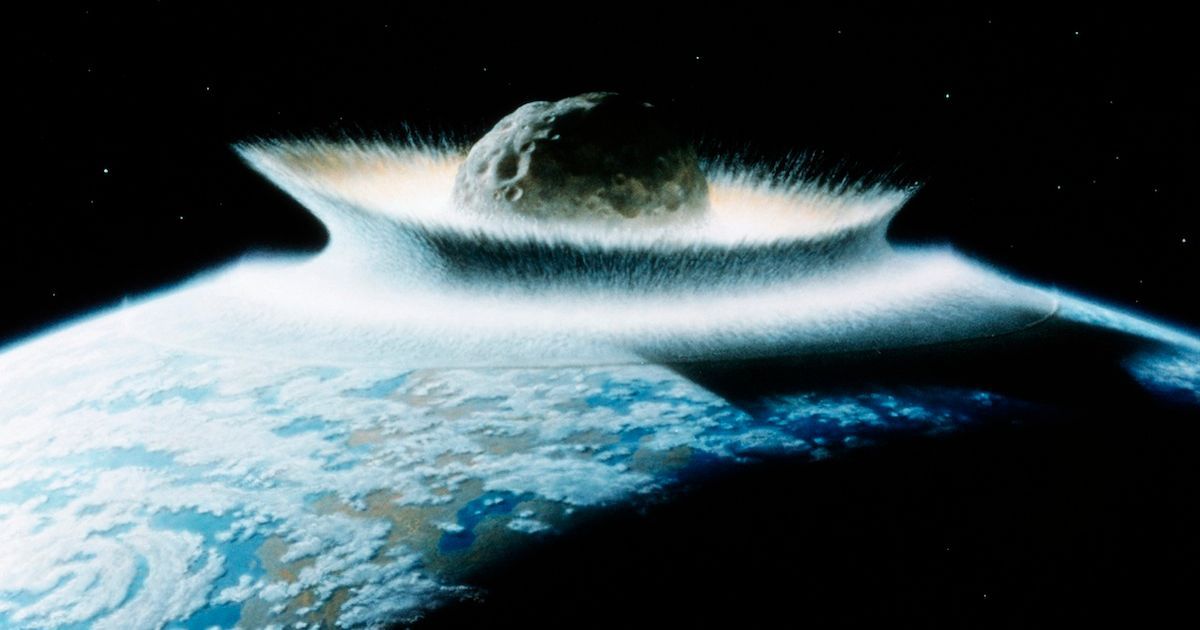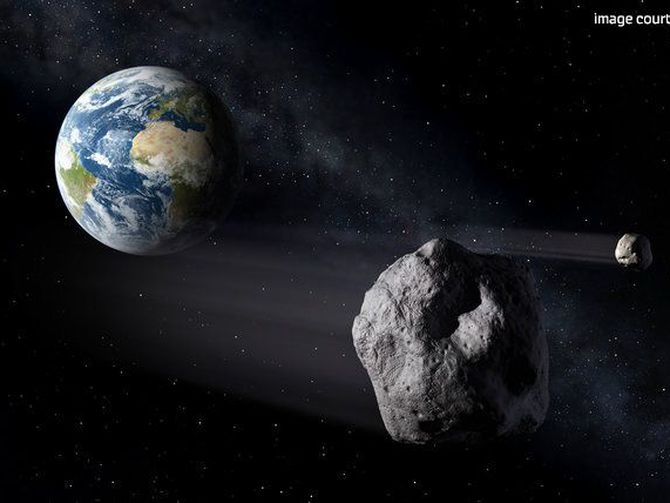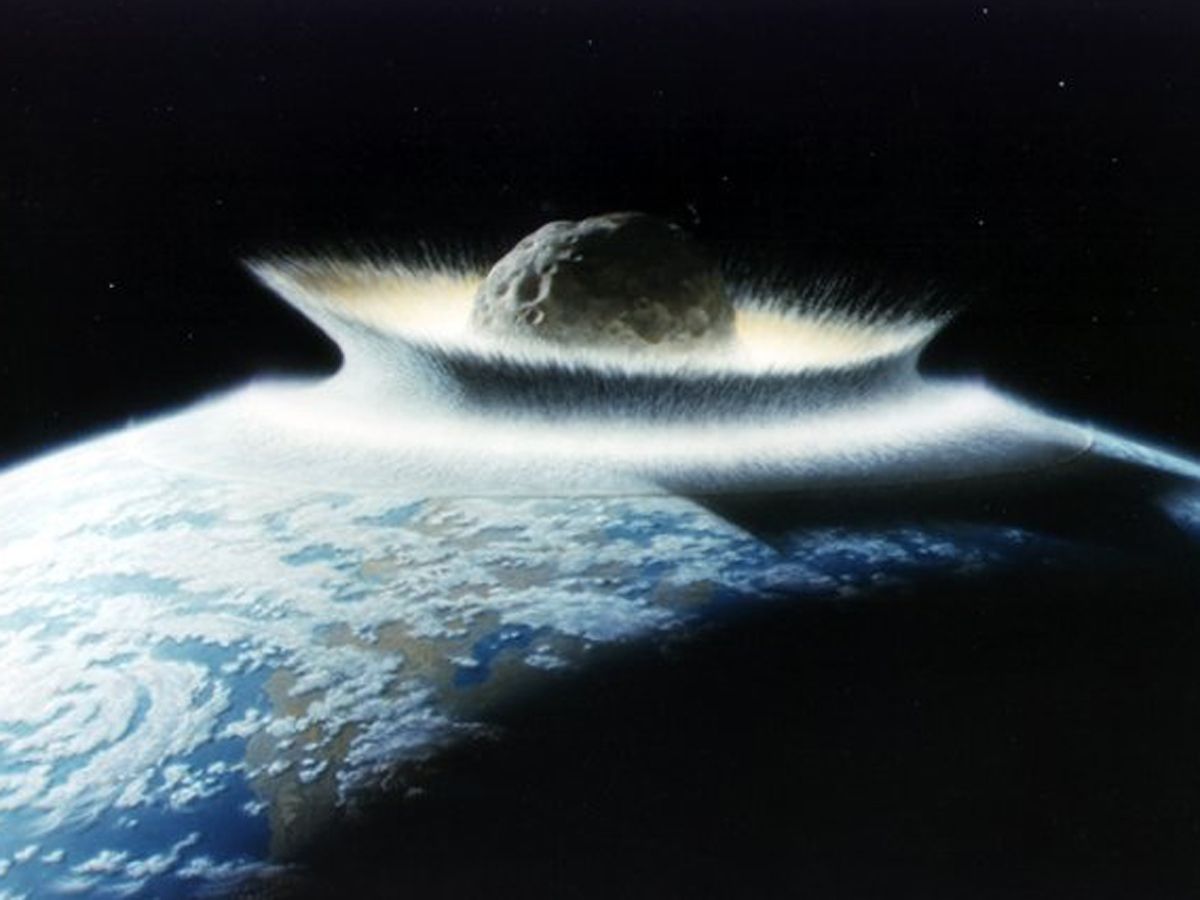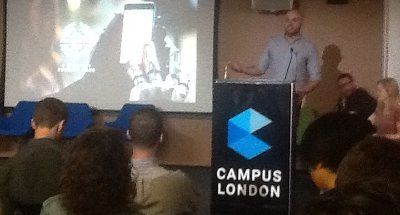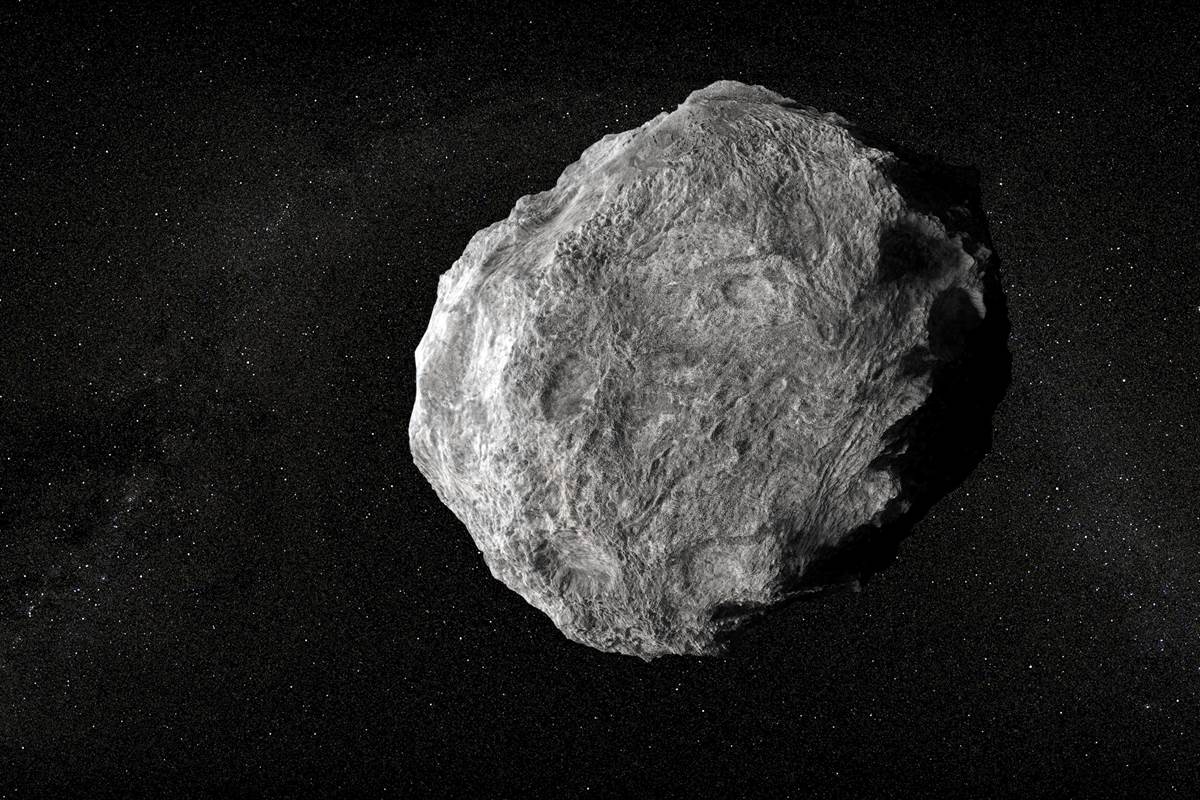Instead of Nuking an Asteroid, Just Splash It With Paint
Recent headlines have contained lots of asteroid-nuking talk. There’s a team of Russian scientists zapping mini asteroids in their lab, and supposedly NASA is thinking about a plan that would hypothetically involve nuking Bennushould it threaten Earth in 2135.
It’s true that NASA is drafting up ideas on how one might nuke an incoming asteroid, a theoretical plan called HAMMER, or the Hypervelocity Asteroid Mitigation Mission for Emergency Response, as we’ve reported. But scientists probably won’t need to use such a response on the “Empire State Building-sized” asteroid 101955 Bennu, which is set to pass close to Earth in 2135. Diverting such a threat could be much, much easier.
“Even just painting the surface a different color on one half would change the thermal properties and change its orbit,” Michael Moreau, NASA’s OSIRIS-REx Flight Dynamics System Manager, told Gizmodo. That would involve literally sending a spacecraft to somehow change the color of some of the asteroid.
There’s lots we don’t know about asteroids just yet, which is why NASA has sent the probe OSIRIS-REx toward Bennu. This mission aims to scoop up and return a sample of the rock in 2023.
There is a minuscule chance, around 1 in 2,700 odds, that Bennu will strike Earth in 2135, reports the Washington Post. The rock isn’t big enough to end humanity, but it could cause some major damage. The OSIRIS-REx spacecraft will study the rock more, and NASA will continue to collect data to either rule out the chance of an impact or increase the odds.
But don’t worry about Bennu yet. Should the odds of a Bennu strike grow too high, the laws of physics will allow for a much easier solution than nuking. We could just splash it with some paint.
The sun pelts everything in the solar system with a slew of tiny particles, for example. This imparts a little bit of pressure. These particles are of no consequence to our own orbit, since Earth is incredibly massive, but Bennu weighs only around 13 times the mass of the Great Pyramid of Giza. That’s very light, comparatively. Given the 120 years or so we’ve got and the amount of distance Bennu has left to travel before its nearby approach, if scientists could make some of it more susceptible to the solar radiation, that would slightly alter its path enough that it would miss us. Doing so would require changing part of its surface so it absorbs more radiation—for example, by covering one side of it with paint. Scientists first need to better study its orbit around the sun to determine the best course of action.
All that is to say, as usual, we’re not about to be hit by the giant asteroid in the headlines.
There are asteroids we need to worry about, of course. But as we’ve reported before, we’re not tracking them. The government has only required that NASA track asteroids larger than a football field or so. Something smaller could go under the radar and cause significant local damage without the 120 years of warning Bennu has afforded us.
The thought of nuking asteroids makes for great science fiction. But instead, you should spend more time upset that we don’t know what smaller asteroids are threatening us, rather than worry about the ones scientists are tracking that could be diverted more easily.

